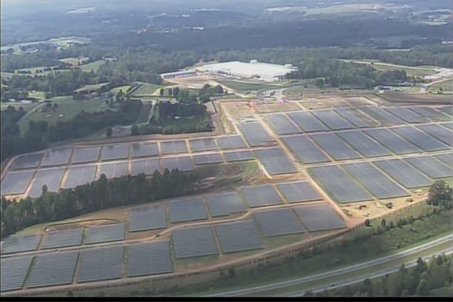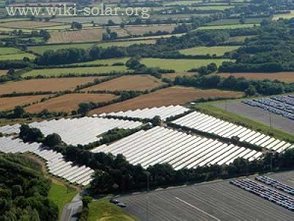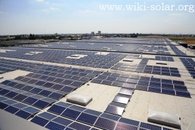Wiki-Solar
The authority on utility-scale solar power
Maps available for selected companies using pull-down menus for participant type above
On-site solar power plant; 'self-consumption' or 'net-metering'
The vast majority of the utility scale solar projects on the Wiki-Solar Database are designed to deliver bulk or merchant power into the electricity grid. A minority, though, are configured to serve a designated on-site or nearby energy user first.
These applications are sometimes referred to as 'self-consumption' or as 'net metering'.
While some self-consumption projects are mounted on the rooftop of the user, most are standard free field installations in the vicinity.
These systems can offer financial advantages because they deliver power directly to the energy user, and it can therefore be valued at the sales price, rather than the lower wholesale price which applies when delivering energy to the grid. That is why the expression 'net metering' is used; because this approach offsets energy that would otherwise come through the metered supply to the user.
The self-consumption projects currently on the Wiki-Solar Database are shown on this map.
Main self-consumers
Utility-scale applications are quite rare because there are relatively few sites which can justify an energy supply at this size.
The industry most common on our map is the automotive industry.
Below utility-scale
Roof mounted self consumption systems are of course very widespread at the domestic scale.
At the commercial scale to it is becoming common too, with chain retailers such as IKEA, Sainsbury's and Wal-Mart using it on many of their stores.
Self-consumption
Some property owners use neighbouring or on-site solar power stations for their own electricity supply


